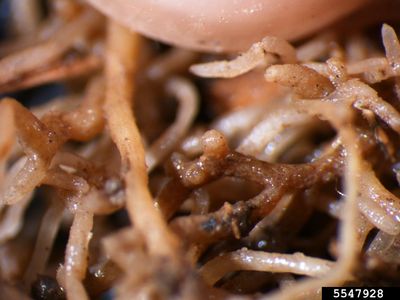Cereal Cyst Nematode Info
Nematodes are tiny worms, often roundworms and cutworms. Some are free-living, feeding on plant materials such as wheat, oats, and barley. These can cause extreme damage and make crops unsaleable. Yellowing patches above ground can indicate you have this nematode in the crop. Roots may be swollen, ropey, or knotted with shallow growth. Small white cysts on the root system are female nematodes, loaded with hundreds of eggs. Juveniles do the damage. They hatch when temperatures drop and autumn rain occurs. Warm and dry weather in fall delay hatching. These nematodes do not usually appear and develop until after the second planting of a cereal crop in the same field.
Cereal Cyst Nematode Control
Learn how to stop cereal cyst nematodes to avoid such issues with your crops. A few ways to do this include:
Plant early to allow a good root system to develop.
Grow resistant types of cereal cultivars to limit chances of nematodes.
Rotate crops every year or two. The first planting seasons are not usually when cereal cyst nematodes occur. If a serious infestation occurs, wait two years before planting a cereal crop in the spot again.
Practice good sanitation, keeping weeds out of your rows as much as possible. If you plant an alternate crop in the same spot in summer, keep weeds down then as well.
Amend soil to improve drainage and keep the soil as fertile as possible.
Fertile, weed-free, and well-draining soil is less likely to retain these pests. Cereal cyst nematodes only feed on grasses and cereal crops and use those plants for hosts. Plant a non-cereal crop in spring to encourage those remaining to move out because of no host and food shortage. Once your field is infested, cereal cyst nematode control is not practical. It is highly dangerous to use chemicals on these crops and the cost is prohibitive. Use the tips above to keep your field free of the pest.
